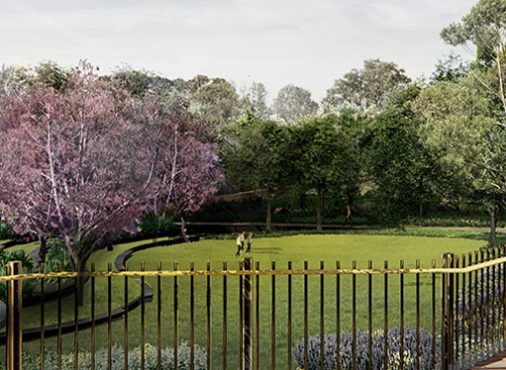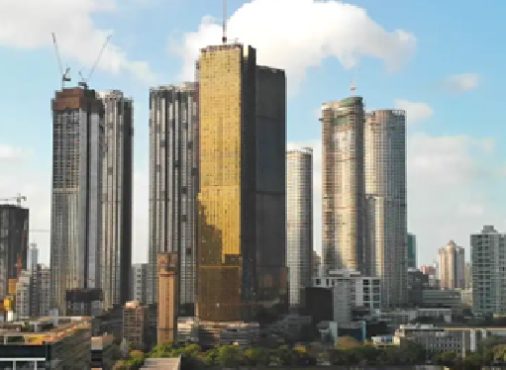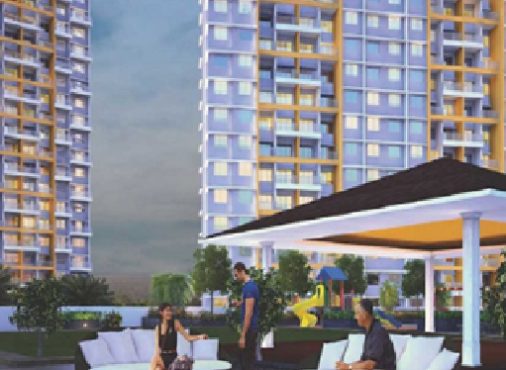Many Non-Resident Indians (NRIs) are turning their attention back to India as retirement approaches. It’s not just for familiarity, but to embrace a lifestyle rooted in comfort, care, and cultural connection. While countries abroad offer structured retirement benefits, the emotional and cultural comfort of returning to India is unmatched.
For NRIs who value a high standard of living without compromising on cultural roots, India presents a compelling option. This guide outlines everything NRIs need to know to access and invest in these emerging lifestyle destinations.
Why India for Retirement: NRI Perspective
The blend of comfort, cultural relevance, and financial reasoning has made India one of the increasingly popular retirement destinations for NRIs. India’s appeal does not solely lie in the comforting surroundings but also in the luxury living spaces that cater to elderly residents.
Affordable Yet Luxurious Living
One of the most practical reasons NRIs are drawn to India for retirement is cost-efficiency without compromise.
While top-tier seniors living in cities like Mumbai, Pune, and Bangalore offer concierge services, private healthcare access, landscaped campuses, and recreational facilities, the overall cost of ownership or residency is still substantially lower than similar setups in the US, UK, or UAE.
What this means for NRIs:
- High-end living at reduced expenses: Luxury retirement homes in India often cost 40–60% less than comparable properties abroad.
- Comprehensive lifestyle offerings: Residents enjoy round-the-clock security, clubhouses, wellness centres, chef-curated dining, and housekeeping as part of standard packages.
- Smart investment potential: The Indian real estate market continues to mature, offering opportunities for appreciation, rental income, and legacy planning through ownership models.
Between 2021 and 2024, capital values in India’s top seven cities surged by 128%, outpacing rental income growth in many micro-markets.
For instance, Mumbai’s Chembur area witnessed a 48% increase in capital values compared to a 42% rise in rental values during the same period.
Read Also: Experience High-End Living at Rustomjee Ocean Vista in Versova
Cultural and Familial Proximity
Beyond economics, emotional alignment plays a pivotal role in choosing India as a retirement destination. For many NRIs, the idea of aging in a foreign land, even one with excellent facilities, can feel isolating.
In contrast, India offers an environment where language, festivals, food, and relationships feel instantly familiar and deeply meaningful.
Key emotional and social benefits include:
- Proximity to family and old friends: Frequent visits, spontaneous gatherings, and celebrations with loved ones are more feasible and fulfilling.
- Cultural immersion: Being part of festivals like Diwali, Holi, Eid, or regional celebrations rekindles a sense of belonging that no overseas alternative can replicate.
- Community bonding: Retirement communities in India often host culturally relevant activities like bhajan sessions, yoga, traditional games, and local excursions, creating a comforting social rhythm.
Understanding Retirement Communities
Retirement communities in India have evolved from basic senior homes to fully integrated, luxury-centric ecosystems. Understanding the different models can help retirees make more informed lifestyle and investment decisions.
Senior-Living vs. Retirement Townships
- Senior-living communities are purpose-built for individuals aged 55 and above, offering lifestyle and healthcare support tailored to their needs. These include wellness programs, emergency medical access, and age-appropriate recreational amenities.
- Retirement townships, on the other hand, are larger integrated spaces that may include housing for multiple generations but with designated zones or buildings for retirees. While they offer more diverse environments, the amenities may not always be as age-specific or specialised.
Read Also: The Premium Lifestyle at Rustomjee Ocean Vista: More Than Just a Home
Ownership vs. Leasehold Models
In India, retirement communities typically offer two models: ownership or leasehold.
- Ownership models allow buyers to purchase the home with full rights, including resale. These offer better long-term value and security.
- Leasehold models, often ranging from 10 to 30 years, are more affordable upfront and include service agreements for healthcare and maintenance. However, they may lack the permanence that ownership provides, especially for estate planning.
Key Legal Aspects to Verify
For NRIs, who are often managing the process from abroad, conducting thorough legal due diligence is crucial when selecting a retirement property. Ensuring legal clarity upfront helps prevent future disputes and ensures rightful possession and use.
Type of Ownership (Freehold vs. Leasehold)
Understanding the nature of ownership is crucial.
- Freehold property means the buyer has full ownership of the property and the land it stands on, with no time restrictions. This is ideal for long-term peace of mind and asset transferability.
- Leasehold property grants rights for a fixed term, after which ownership reverts to the original landowner. It is important to clarify renewal terms, cost implications, and restrictions on resale or inheritance.
Developer’s License for Senior-Living Services
Not all developers are authorised or equipped to offer senior-living facilities. It is essential to verify whether the developer has:
- Valid licenses to provide elder care and assisted living services.
- Tie-ups with healthcare providers for emergency and regular medical support.
- Compliance with local and national safety regulations specific to senior housing.
Eligibility and Documentation for NRIs
Before investing in a retirement home in India, Non-Resident Indians (NRIs) must meet certain eligibility criteria and provide specific documentation. These ensure compliance with regulatory frameworks while also helping developers assess buyer readiness.
Minimum Age and Income Requirements
Most senior living communities in India have a minimum entry age, typically 55 years and above. Some high-end retirement projects also evaluate financial readiness to ensure residents can sustain the lifestyle and services offered, although formal income thresholds may vary by project.
KYC Documents: Passport, OCI, Address Proof
NRIs must furnish Know Your Customer (KYC) documents, which typically include:
- A valid passport.
- Overseas Citizen of India (OCI) or Person of Indian Origin (PIO) card.
- Proof of address (both overseas and Indian).
These documents help verify the individual’s legal status and eligibility for property ownership under Indian law.
Health and Insurance Integration
Health services are a cornerstone of luxury retirement living. Most reputable retirement communities offer integrated medical services and support to ensure a safe and comfortable environment for senior residents.
On-Site Medical Support and Tie-Ups
Top-tier communities feature on-site clinics, 24/7 nursing staff, and ambulance services, with many having formal tie-ups with nearby multi-speciality hospitals. Preventive healthcare programs, wellness workshops, and physiotherapy are often included in the service offerings.
Requirements for Medical History
Prospective residents may be asked to submit a brief medical history or undergo an initial health screening. This ensures the facility is equipped to handle residents’ needs and can recommend specialised housing or care options if required.
Top Indian Locations for Retirement Projects
Choosing the right location is crucial when investing in a retirement home. India’s top cities and semi-urban zones offer a unique combination of climate, infrastructure, healthcare access, and lifestyle benefits. These include:
- Mumbai Outskirts (e.g., Karjat, Panvel): Offer proximity to urban hospitals with quieter surroundings. These regions also provide better affordability compared to central Mumbai, making them ideal for retirement investments.
- Pune: Known for its pleasant climate, good hospitals, and growing senior-living ecosystem. Its well-planned infrastructure and cultural vibrancy make it appealing for long-term stays.
- Goa: Ideal for retirees seeking a relaxed, coastal lifestyle with strong expat communities. The availability of beachfront properties and wellness retreats adds to its charm.
- Coimbatore: Popular for its low pollution levels, strong medical infrastructure, and serene environment. It’s also emerging as a hub for premium retirement communities with holistic living options.
Conclusion
For NRIs seeking a life of ease, purpose, and cultural connection, luxury retirement communities in India offer a future worth planning for. With modern infrastructure, healthcare integration, curated lifestyle amenities, and financial sensibility, these communities transform retirement into a time of freedom and fulfilment, and not compromise.
Rustomjee stands at the forefront of this evolution, offering senior-living solutions designed with empathy, precision, and luxury in mind. Discover Rustomjee’s residential properties where your next chapter is just the beginning of something exceptional.
FAQs
- Can NRIs legally purchase property in Indian retirement communities?
Yes. NRIs are permitted to purchase residential properties in India under FEMA regulations. However, they must use funds from NRE/NRO accounts or via inward remittance. Agricultural land and plantation property remain restricted, but retirement community apartments and villas are fully accessible.
- Can NRIs repatriate the proceeds after selling a retirement property?
Yes, repatriation is allowed for up to two residential properties, provided the original purchase was made using funds from NRE or FCNR accounts or via foreign remittance. Proper documentation, including a sale deed, proof of purchase, and Form 15CA/CB, is required for RBI clearance.
- Can NRIs buy homes in luxury retirement communities in India even if they don’t plan to retire soon?
Yes, NRIs can invest in luxury retirement communities in India regardless of their immediate retirement plans. These properties often serve as future-ready investments, vacation homes, or rental income sources.
Many developers also offer customisable ownership models and long-term maintenance options, allowing NRIs to secure a premium lifestyle for the future while enjoying steady asset appreciation.








